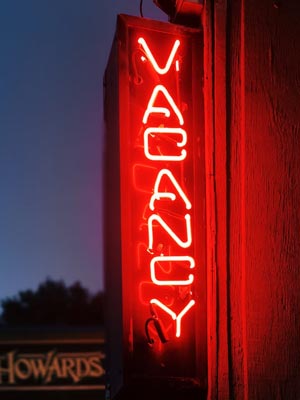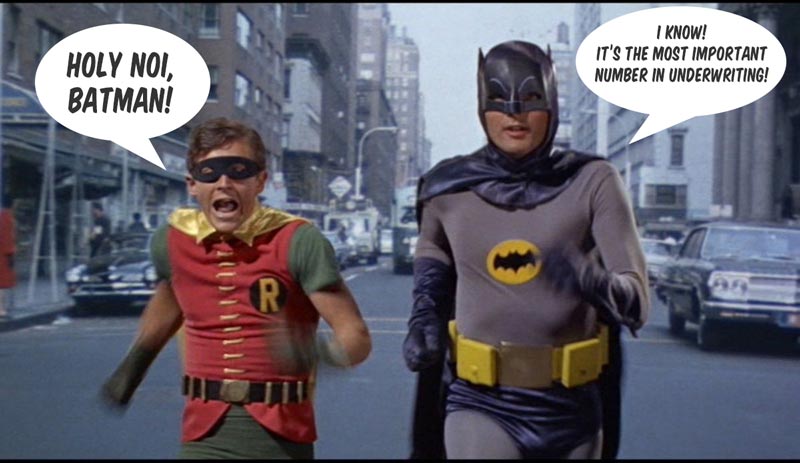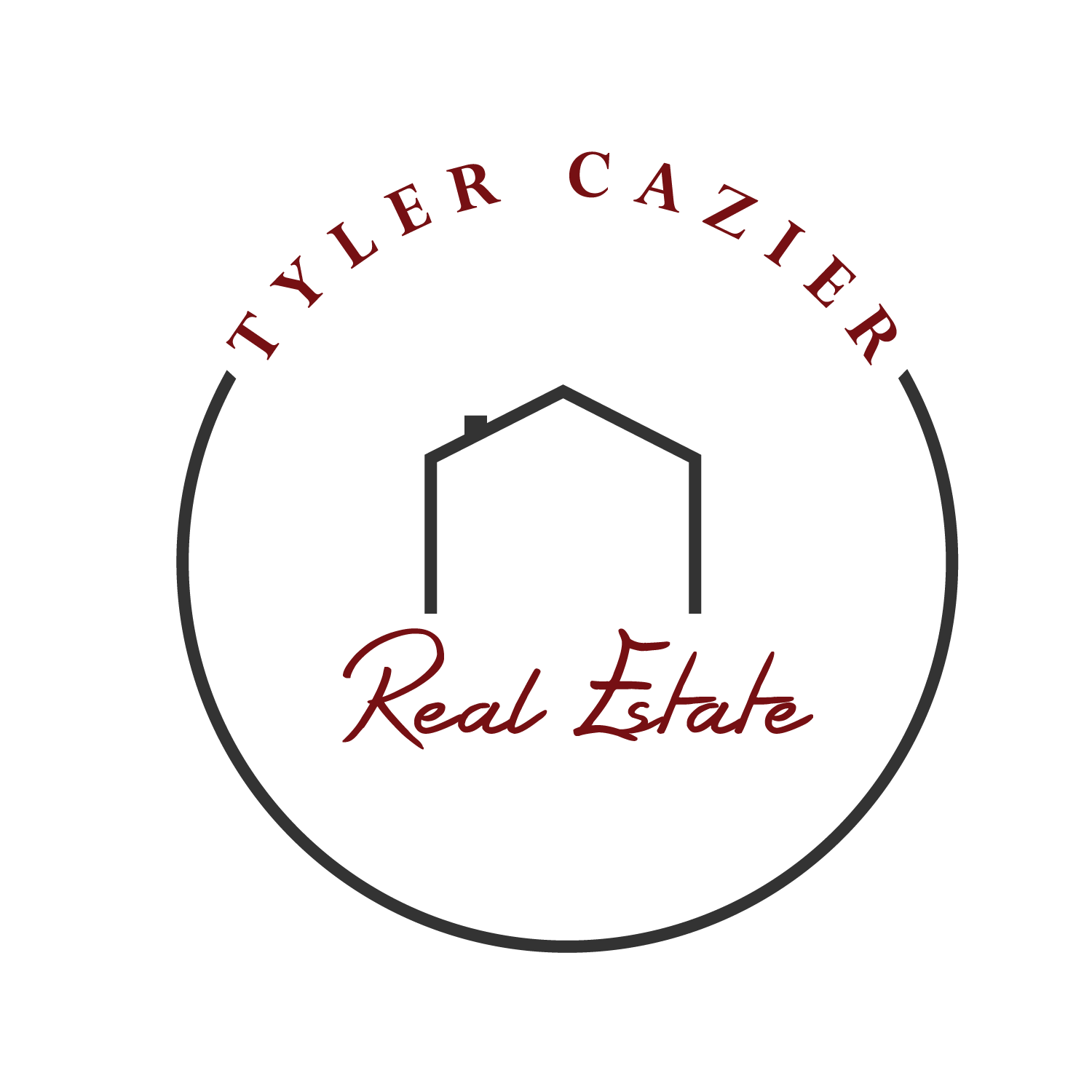How to “Run the Numbers” on an Investment
Well, here’s a topic we can argue over! Hahaha.

“Running the numbers” (also known by industry pros as “underwriting”) is far an away the most subjective objective process in real estate. A deal underwritten by one investor may be a hard no, while the same deal underwritten by another investor is an impossible to miss investment.
What makes the difference?
Well, in my opinion, it’s the experience of the investor and how well-tuned the investor is to the desired outcome of the investments.
One thing is certain though: the more you underwrite deals, the better you’ll be at it. With more practice, you’ll get better results that more-accurately reflect your investment objectives.
What is Underwriting?
Underwriting is the process of evaluating an investment’s risk. The biggest part of evaluating risk is filtering through the details of a deal to find where the deal makes money and where the deal loses money. You’re doing your best to predict how well the investment is going to do. That’s one thing when you’re dealing with your own money, but as soon as you add third-party investors, you can bet your underwriting will be heavily scrutinized!

According to Investopedia.com, “The term underwriter originated from the practice of having each risk-taker write their name under the total amount of risk they were willing to accept for a specified premium.” That is the best historical image conjuring of underwriting I’ve ever heard.
A Hypothetical Scenario
Let’s give ourselves something to work with. Let’s say you’re looking at a property for purchase. The purchase price is $100,000 (easy math, haha. It’s my example, I can do what I want!). It’s going to take about $30,000 to do some renovation to get this place “rent ready” or $40,000 for furnishings to get it “Airbnb ready.” For the purposes of this example, we’re not going to evaluate every “dispo” option. (“Dispo” is short for “disposition” which means to dispose of the property somehow. It’s the action you take after you’ve acquired the property so you can make money with it.)
You could flip it for $150,000. You could hold it as a long-term rental at $1,000 per month. You could Airbnb the property for short term for ~$2,500 per month or mid-term for ~$2,000 per month.
There are a myriad of other ways to dispo a property, but for simplicity, I am limiting our example.
Income: What Makes Money Month to Month
Look at all the options to make money on the property. The most obvious one is rent. I can take $1,000 a month for a long-term (12-month) tenant. That’s not a bad option. It’s reliable and predictable.
“But why wouldn’t you take the $2,500 from Airbnb, Tyler?” Well, that’s a good question. It’s more money, but it also is likely to take more of my time. Oh, we’re already getting into the subjective mud of investment underwriting! Is it better to take more money and put more work in or take a predictable, boring income with a long-term tenant?
Good question. It depends.
It depends on your investment objectives, which is a discussion for another day.
But think of the other incomes. What about pet income charged for a pet rental? How about tech income charged for renting a router or other tech equipment. Coin-op laundry? Vending machines?
Gross Potential Income
Whatever you think you can don on this property to earn money on a month-to-month basis is your income.
I’m going to take the $1,000 long-term tenant. I’m going to renovate to ensure pets can be there (LVP flooring is the biggest thing here), so I can charge a $100 per month per dog pet fee. I’m going to charge $50 per month for internet, (this includes the service and modem rental). This particular property isn’t a good candidate for coin-op laundry or vending machines.
Now I’m going to total all that up for the ideal tenant. This is going to give me a Gross Potential Income (GPI), which is the most money I can possibly make in a month. (We’ll come back to adjust this in a later step since nothing goes perfectly.)
GPI = (Rent Income + Pet Income +
Tech Income + Other Income) * 12
Calculating Gross Potential Income
| Monthly Rental Income | $ 1,000 |
| Pet Income | $ 100 |
| Technology Income | $ 50 |
| GROSS POTENTIAL MONTHLY INCOME (GPMI) | $ 1,150 |
This property has a maximum GPMI of $1,150. Cool. Investors always annualize numbers so we can evaluate properties on a yearly basis. So let’s multiply by 12 to make this a yearly number.
GROSS POTENTIAL INCOME (GPI): $1,150 x 12 Months = $13,800
Store that away, we’ll need it in a little bit.
Expenses: What Takes Money Month to Month
Let’s look at the other side of the coin — investment properties cost money too.
Your Mortgage

We’ll assume that you don’t just have $100,000 lying around your house (otherwise you wouldn’t be reading this article). You’re going to take a loan on this property. Oh boy, that’s going to eat up all my profit, right? Well, let’s figure that out.
Since this is an investment property, you’ll have to put down 20%. (25% if you want a great rate, but for our example: 20%.)
That’s means you’ll need $20,000 for a down payment. (This becomes part of your cost of entry, and we’ll talk about this more in a moment.) And that leaves $80,000 to be financed by a bank. It’s 2022 when I’m writing this, and a typical investment property is 6.5% APR (annual percentage yield).
I’ll save you some time here and keep our discussion focused. Here are the numbers for your fixed-rate 30-year amortized loan:
Principal and Interest (also referred to as “PI”) is $505.65. We’re going to annualize this as well so that we can keep track of everything.
Gross Annual Mortgage Payments: $ 6,067.80
Taxes
Don’t forget that you have to pay taxes, man! We go to the county records and we learn that taxes on this property are $1,500 per year, or $125 per month.
Insurance

It’s wise to get insurance on this property (if you bought it cash), so we’re going to have insurance on the property (it’s also required by the lender).
You go check with a few different insurance providers, and you find that you can get 12-months of insurance for $200, or just $16.66 per month. Nice!
PITI
That that we’ve calculated our mortgage (Principle and Interest), Taxes, and Insurance, we can use our PITI numbers in our calculation.
PITI = (Principle + Interest + Taxes + Insurance) * 12
Calculating PITI
| Principle & Interest | $ 505.65 |
| Taxes | $ 125.00 |
| Insurance | $ 16.66 |
| TOTAL MONTHLY PITI | $ 647.31 |
We’re going to make this an annualized PITI as well by multiplying by 12.
$647.31 Monthly PITI x 12 Months = $7,767.72
Vacancy

Now we start taking into account on-going year-over-year expenses. We plan for them to make sure we’re ok. Vacancy means nobody is paying your rent to live in your property this month. This happens naturally between tenants. But it also occurs if you need to evict your tenant. A good rule of thumb is to use 10% vacancy. This will naturally make your numbers conservative and protect you from shortfalls. This is subjective as well. If you think your vacancy may be higher, then elect a 12% or 15% vacancy — higher if you need it for long-term renovation. You can also go lower. This is where experience and familiarity with the rents in the area are incredibly important.
Vacancy = GPI * Vacancy Multiplier
We’re going to use the rule of thumb of 10%.
To calculate this, we’re going to take 10% of the Gross Potential Income (GPI). Our GPI is $13,800, so 10% is $1,380.
Maintenance
This is also subjective. How much maintenance are you going to need? It’s unknown. In general, though, you can make some assumptions. If a property just had all its major systems renovated, for example, you can assume that there will be no major (“expensive”) maintenance there. If you have to have a plumber come in and work on a toilet, that will be a service call. What about yardwork? If the property is in a place where you can pass it off to the tenant, it’s $0, otherwise it will cost you $150 per month or more!
Maintenance = GPI * Maintenance Multiplier
A conservative estimate of maintenance is 10% per year — just like vacancy. So, we’re looking at 10% of Gross Potential Income (GPI) of $13,800, which is $1,380.
Other Expenses
Any other monthly expenses on the property will show up here. This could include property management expenses (usually 10%), HOA expenses, utilities, or any other regular expenses. The key here is to make sure you’re not missing anything. Account for everything that’s going to take money from you every month. If you don’t, you’re likely to end up with some unpleasant surprises!
A note on expenses: We mentioned above that vacancy and maintenance are subjective. You can reduce these percentages to 5% respectively, for example. This may be a much more accurate accounting, however, YOU MUST have solid, compelling evidence that it’s going to be lower before you just inflate your numbers. Beware this desire to make the numbers look better than they are. No one ever lost money by NOT investing in a potential opportunity. (Of course, no one ever made money that way either.) You want the most-accurate information possible.
All Expenses Now!
Okay, let’s put all these expenses together now, and see what we learn! Make no mistake, if you’re going to present your underwriting to other investors, this section is going to get a lot of read time.
Annual Expenses = (PITI + Vacancy + Maintenance + HOA + Property Management + Other) * 12
Calculating Annual Expenses
| Principle & Insurance | $ 505.65 | $ 6,067.85 |
| Taxes | $ 125.00 | $ 1,500.00 |
| Insurance | $ 16.66 | $ 200.00 |
| Vacancy | $ 115.00 | $ 1,380 |
| Maintenance | $ 115.00 | $ 1,380 |
| HOA | $ 0 | $ 0 |
| Property Management | $ 0 | $ 0 |
| Other | $ 0 | $ 0 |
| TOTAL ANNUAL EXPENSES | $ 877.31 | $ 10,527.85 |
Net Operating Income (NOI)
Now, we finally have enough information to calculate the holy NOI. Now we take all the annual income (GPI) and we subtract the annual expenses.

NOI = GPI – Annual Expenses
For our NOI calculation we get $13,800.00 – $10,527.85 = $3,272.15.
That means we’re making $3,272.15 every year on the property.
Go / No Go Decision
Every investment calls for a thumbs up 👍 or a thumbs down 👎 decision. Are you going to buy this property, or aren’t you? This is decision is NOT in the scope of this article. I can’t tell you if this is a good investment or not because I don’t have any context. Usually “context” for a real estate investor is established through ratios. Here’s a quick primer on some of those ratios:
Cost of Entry
Cost of Entry is the expense that it takes to get into the property. It’s overlooked by many investors. They often want to know “what’s the year in / year out” on a property. While that’s a valid profitability indicator, it’s VERY helpful to actually have solid information about the investment and how much it costs to get into.
I’m not talking about just the purchase price, though the purchase price is very important. This is the “all-in” number of what it takes. It includes your down payment (if you’re getting a loan), all rehab expenses, and closing expenses.
Pace Morby, one of my great mentors, explains the one-time entry fee is composed of seven components:
- The amount of cash the seller needs
- Arrears
- Cost of acquisition
- Close of Escrow
- Renovations
- Maintenance
- Marketing
Pace is typically involved with more complex transactions of a “creative finance” flavor, but his point is salient: there are more expenses to enter the property than most people think of.
In our example the all in is composed of a few expenses:
Cost of Entry = DP + Arrears + Acquisition + Escrow + Reno + Maintenance + Marketing
Calculating the Entry Fee
| Down Payment | $ 20,000 |
| Arrears | $ 0 |
| Cost of Acquisition (typically a wholesale fee) | $ 0 |
| Close of Escrow | $ 1,500 |
| Renovations | $ 30,000 |
| Maintenance | $ 1,000 |
| Marketing | $ 500 |
| TOTAL ENTRY FEE | $53,000 |
We talked about a few of these like the down payment and the renovation. Let’s explain these others.
Cost of Acquisition
If you’re buying a distressed property, they may be back taxes or un-paid mortgage to bring the property into a state so the seller can sell it to you. It was $0 in our example because I was keeping it simple.
Close of Escrow
Escrow refers to a third party that holds a transaction while two parties complete the transaction. In most examples, this is the title company. Turns out, they charge for that service. They’re the ones who keep track of the loan, the monies like the down payment and the earnest money, the deed of trust, the promissory note, title insurance, and recording the transaction with the county. Wow, they do a lot.
Maintenance
I know, we talked about maintenance above as a monthly expense. Wouldn’t it be great if you funded a maintenance account as soon as the property was purchased? That’s what this is doing. We’re funding a minimum of a $1,000 reserve account on the property as soon as we have it in our name.
Marketing
If you’re a professional investor, you’re tracking all kinds of things. One of them is the cost to acquire deals — not the purchase price, but the price of getting deals in front of you. You’re likely spending money on services that bring deals through the door. These services are collectively called, “Marketing.” It’s tough to get a grip on this if it’s the first deal you’ve ever done. However, once you have two or three deals, you’ll be able to average-out a cost of what it takes to put a deal on the table.
I am using $500 in my example, because that’s the KPI (key performance indicator) I’m tracking in one of my investment markets.
Cap Rate
Personally, I hate the cap rate, or capitalization rate. I think it’s a terribly blunt ratio. Tons of investors use it, improperly in my opinion. I did an episode just on Cap Rates — check it out.
Cap Rate = NOI / Purchase Price
So, in our example, we know the NOI is $3,272.15. We also know the Purchase price is $100,000. That means our Cap rate = $3,272.15 / $100,000 = .0327 Cap.
In the biz, this is called “3 Cap”. In general, this property would be considered to be “over-priced.” And that’s why I hate the Cap rate as a metric of investment performance. All it tells you is that a property is properly priced or not, and there are better ways to tell if it’s properly priced … like a CMA.
It also doesn’t account for all the cash you put in. Does it account for the Entry Fee? Nope.
Cash on Cash
Enter the Cash on Cash (CoC) ratio. This does a better fob of determining cashflow performance on a property.
Cash on Cash is how much cash am I making annually for how much cash I put into the property?
CoC = NOI / Cost of Entry
So, we’re at $3,272.15 / $53,000 = 6.17% CoC Return
Other Things to Take Into Account
Buying an investment has lots of angles of profitability. Don’t be diluted into thinking that Cashflow is the only metric to pay attention to. I like to evaluate my properties as four pillars. I learned this from Steve Bond, the great founder of FIG – Fourplex Investment Group. The four pillars are: 1) Cashflow (we’ve dedicated a lot of time to this pillar today). 2) Mortgage Interest…which you can write off against your taxes! 3) Depreciation…27 and 1/2 years of an asset that is wearing down. 4) Equity Appreciation – how much your property value is going to increase over the term that you’re going to own it.
If you’re a multifamily investor, or looking at bigger deals, get to know the Internal Rate of Return (IRR) for the period of ownership. This will speak highly to investors you want to take you seriously.
Those topics, alas, are topics for another day.
TLDR
In the end, evaluating an investment opportunity has many angles to review it from. As an investor, you need to be able to articulate WHY you want an investment. After you’ve done that, you can effectively evaluate a property to see if it does the thing you’re after.
Most investors are VERY interested in cashflow — and that’s been the focus on this article. Learn how to read the income and expenses of a property and you’re well on your way to understanding how to make money with a property.
As always, the more practiced you are in the art of understanding the numbers, the better investor you’ll be.
When you need someone to take a look at numbers with you, get some time with me, and let’s talk about your numbers! Shoot me a text if you’ve got a quick questions: 801-210-0230.
Schedule a One on One with Me!